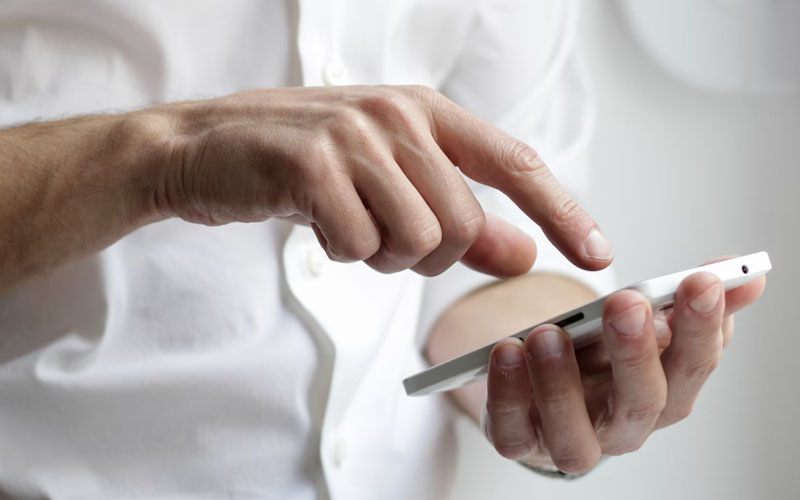Has your once-speedy smartphone started to feel sluggish? You’re not alone. Phone slowdowns can happen for various reasons, and while most people jump to clearing storage or deleting apps, there’s another culprit you might not have thought of—your posture.
Surprised? Poor posture, often referred to as “tech neck,” can not only wreak havoc on your health but can also affect how you use your phone, leading to performance issues. This guide will walk you through quick fixes to improve your phone’s speed while also helping you maintain better physical health.
What Is Tech Neck, and How Does It Impact You?
The term “tech neck” describes the strain and discomfort caused by constantly looking down at your devices, which places stress on your neck and shoulders. But what does tech neck have to do with your phone’s performance?
The connection may not be obvious at first, but prolonged bad posture can impact how effectively you interact with your device. For instance, keeping your phone in awkward positions might lead to inconsistent usage patterns, less mindful care, and even overheating due to being stored improperly.
That slight lag or delay you notice could be a combination of both physical and technical factors.
7 Quick Fixes to Speed Up Your Phone (and Improve Your Posture)
1. Hold Your Phone at Eye Level
One of the quickest fixes you can implement is to stop looking down at your phone. Holding it at eye level reduces the strain on your neck and shoulders while improving your ability to focus on the screen.
Not only could this simple change make a big difference for your body, but it also encourages more mindful device interactions. Bounced signals and accidental drops due to awkward angles can affect the hardware and potentially lead to performance issues.
2. Avoid Prolonged Usage in One Position
Whether you’re scrolling through social media or streaming a favorite show, sitting in one position for too long can lead to stiffness or a cramping grip. Frequent repositioning ensures better comfort and reduces the chances of putting unnecessary strain on your phone’s buttons and ports, which could affect responsiveness over time.
3. Take Regular Breaks
Just as your phone benefits from occasional resets to clear cached data, your body deserves breaks too. Set a timer or use a reminder app to nudge you into taking a break every 30 minutes.
Stretch your arms, neck, and back during these breaks. Trust us—your body (and your phone) will thank you. Frequent breaks not only enhance physical health but may reduce your tendency to overuse the phone, reducing wear-and-tear on its processor.
4. Clean Your Screen and Ports
Sometimes, your phone may feel slow simply because sensors and ports are dirty. But why is this included in a guide about posture? Because how you hold and use your phone over time affects its cleanliness.
Avoid gripping your phone too tightly or holding it with dirty hands, as these habits can allow grime and fingerprints to collect on key areas. A simple clean with a microfiber cloth can improve touch responsiveness and overall performance.
5. Charge Your Phone at Optimal Angles
Did you know poor charging habits can make a big difference? Many users bend their charging cables awkwardly or place their phones on uneven surfaces while charging—behaviors closely tied to poor posture.
Ensure your phone is laid flat or propped up securely while charging. Avoid holding it in hand while it’s plugged in, as this not only strains your neck but can also lead to overheating, which slows your device.
6. Engage in Posture-Correcting Exercises
Good posture doesn’t come naturally for most people—it requires conscious effort and regular practice. Simple activities like neck stretches, shoulder rolls, and back extensions can counterbalance the strain caused by excessive phone usage.
Here’s an easy one to try right now:
- Sit up straight.
- Slowly tilt your head forward, backward, and side to side.
- Roll your shoulders backward in a circular motion five times.
By building strength in your upper back and neck muscles, you’ll not only stand taller but also hold your phone in ways that reduce unnecessary strain—on both you and your device.
7. Avoid Keeping Your Phone Too Hot or Cold
Your posture determines where and how you store your device throughout the day. Placing it in your lap instead of a proper pocket or bag could lead to overheating, especially if it’s resting on fabric.
Similarly, clutching your phone outside during freezing temperatures can slow down its internal components. Always aim to store your phone in an area with stable temperatures when not in use.
The Benefits of Fixing Your Posture for Your Phone and Health
Beyond speeding up your phone’s performance, improving your posture offers numerous long-term benefits.
- Reduces physical discomfort: Proper posture alleviates neck, back, and shoulder strain caused by poor device-holding habits.
- Extends phone longevity: Mindful handling reduces the chances of accidental drops, scratches, and hardware malfunctions.
- Enhances overall productivity: Better posture allows you to stay focused during phone usage, whether you’re working, studying, or staying connected.
Most importantly, maintaining good posture creates a ripple effect. When you’re mindful of how you hold and use your phone, you’re also more likely to adopt better habits that benefit other areas of your life.
Fixing Your Phone Starts with You
While it might be tempting to blame your phone for slowing you down, the reality is that a little care—for both your body and your device—can go a long way.
Start by implementing these 7 quick fixes to improve your posture and optimize your phone’s performance. Over time, these small yet meaningful changes can make your relationship with technology healthier and more productive.
What are your top tips for combating phone slowdowns? We’d love to hear from you! Share your thoughts in the comments below.


